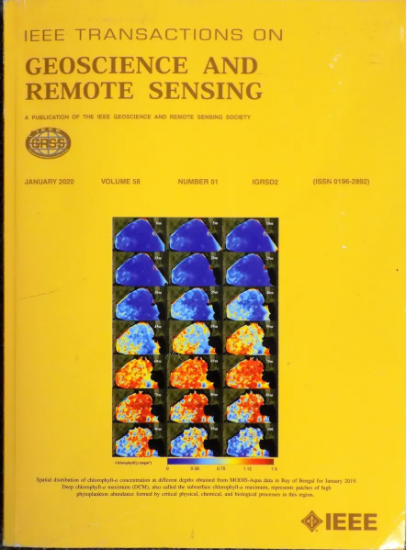基于非线性时差校正的几何结构约束马尔可夫决策过程的低信噪比首破拾取
IF 7.5
1区 地球科学
Q1 ENGINEERING, ELECTRICAL & ELECTRONIC
IEEE Transactions on Geoscience and Remote Sensing
Pub Date : 2025-04-14
DOI:10.1109/TGRS.2025.3560441
引用次数: 0
摘要
初破拾取对于估算和模拟地表和浅层介质速度至关重要,特别是在复杂的山区。在这里,近地表高程、低速带厚度的显著变化以及近地表速度的横向变化导致了迹到迹到达时间的显著差异。对于海量的地震数据,人工选取方法效率低,且不现实。因此,随着时间的推移,各种自动拾取方法已经开发出来,包括利用地震记录属性和深度学习技术等方法。在本文中,我们提出了一种基于特征模板的非线性跟踪时差(FT-NltD)校正方法来校正非线性时差(NltD),使NltD变为线性。然后,我们提出了一种基于几何结构约束的多属性马尔可夫决策过程(GCMDP),用于鲁棒高精度自动首断采摘。在GCMDP中,我们以线性几何结构为约束,在拾取过程中进行动态优化,同时对首破位置和多属性约束进行多步预测,从而稳定地实现首破拾取。最后,我们使用现场数据来证明所提出的首破拾取方法的有效性。本文章由计算机程序翻译,如有差异,请以英文原文为准。
Low SNR First-Break Picking via Geometric Structure Constraint Markov Decision Process With Nonlinear Time Difference Correction
First-break picking is crucial for estimating and simulating surface and shallow medium velocities, particularly in complex mountainous regions. Here, the significant variations in near-surface elevation, the thickness of low-velocity zones, and lateral changes in near-surface velocity result in noticeable differences in trace-to-trace arrival times. The manual picking method is inefficient and unrealistic on massive seismic data. Accordingly, various automatic picking methods have been developed over time, including approaches utilizing seismic record attributes and deep learning techniques, among others. In this article, we proposed a feature template-based nonlinear trace time difference (FT-NltD) correction method to correct nonlinear time difference (NltD), turning the NltD to linear. Then, we proposed a geometric structure constraint multiattribute Markov decision process (GCMDP) for robust and high-precision automatic first-break picking. In GCMDP, we use the linear geometry structure as a constraint, dynamically optimize in the picking process and apply multistep prediction to the first-break position and multiattribute constraint at the same time, so as to realize the first-break picking stably. Finally, we use field data to demonstrate the effectiveness of the proposed first-break picking method.
求助全文
通过发布文献求助,成功后即可免费获取论文全文。
去求助
来源期刊

IEEE Transactions on Geoscience and Remote Sensing
工程技术-地球化学与地球物理
CiteScore
11.50
自引率
28.00%
发文量
1912
审稿时长
4.0 months
期刊介绍:
IEEE Transactions on Geoscience and Remote Sensing (TGRS) is a monthly publication that focuses on the theory, concepts, and techniques of science and engineering as applied to sensing the land, oceans, atmosphere, and space; and the processing, interpretation, and dissemination of this information.
 求助内容:
求助内容: 应助结果提醒方式:
应助结果提醒方式:


